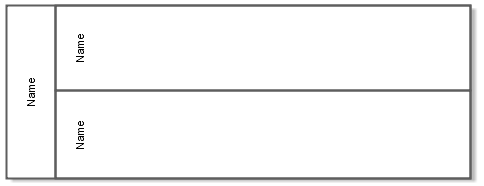Pools and lanes
Pools give business process diagrams a clear structure.
A pool is a graphical container in which a set of activities of a business entity are combined.
A business entity can be a function, an application system, an organizational element (including Organizational unit, Organizational unit type, Group, Role, Position, Person, Location, System organizational unit, and System organizational unit type), or a data element (including Technical term, Cluster/Data model, Entity type, Relationship type, ERM attribute, Business object, Complex object type, COT attribute, Class, and Information carrier).
In BPMN, two pools represent two different business entities. The technique of structuring a model into pools is typically used in a B2B context.
A pool combines a process partner's various activities that are structured and organized using lanes. In this way, a differentiation is made to the activities of other process partners (see the previous figure
Two pools with sequence and message flow).
In a BPD, pools need not necessarily contain process elements. It is also possible to insert an empty pool ('black box') into a model, for example, for the purpose of integrating the interrelationships of a subprocess (e.g., of a business associate) that is involved, but whose details are unknown into an overall process. Avoiding overcomplexity may be a reason for not modeling details of a subprocess (see the figure
E-mail voting process).
Pools include at least one lane. A lane can in turn contain additional lanes that are nested or defined as a matrix. If a pool has only one lane, the pool and the lane will have the same name. If a pool includes more than one lane, lane names and a special pool name must be specified.
In ARIS, pools and lanes are individual object types that are initially placed in the model. Within the pool, the process can be modeled in a way similar to an EPC. All functions, events, and rules of the process are placed on the pool object. Use the belongs to connection to describe the association of these objects with a pool. We recommend that you create it as an implicit relationship. A connection of the depicts type links the pool object to an organizational element, application system type object, data element, or function. It should be noted that each pool may have only one connection of this type throughout the given database. These relationships should also be implicit.
According to BPMN specifications, a pool does not need to be represented in the model by a symbol. Furthermore, the borders of
a single pool may be hidden, especially if the diagram contains only one pool (see the figure
E-mail voting process). However, these options are not recommended for models containing multiple pools because this would affect the model's transparency.

